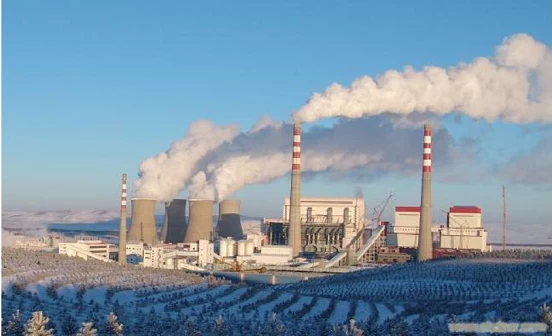Boiler Terminology Explanation (Part 14)
Boiler Terminology Explanation (Part 14)
131.DrumIn a water-tube boiler, the drum is a cylindrical pressure vessel used for steam-water separation and steam purification. It forms part of the water circulation loop and stores a certain amount of water, also known as a steam drum. Its primary functions include receiving feedwater from the economizer, separating steam from water, supplying water to the circulation loop, and delivering saturated steam to the superheater. The drum retains a certain amount of water, which acts as a thermal buffer to slow down steam pressure fluctuations when operating conditions change. It also helps balance short-term mismatches between feedwater supply and load demands. Internal components within the drum facilitate steam-water separation, steam purification, internal chemical dosing, and continuous blowdown to ensure steam quality. As a China high pressure check valve supplier, ensuring high-performance components within such pressure systems is critical to maintaining operational efficiency and safety.
132.Upper and Lower Wall Temperature DifferenceDuring the startup and shutdown of a natural circulation boiler, due to the different heat transfer rates of steam and water inside the drum, the upper part of the drum wall tends to have a lower temperature than the lower part during startup, while the opposite occurs during shutdown. Generally, the temperature difference between the upper and lower walls should be kept below 50°C. In modern large-scale boilers, an intermediate layer within the drum ensures that the entire drum wall is exposed to a steam-water mixture, significantly reducing the temperature difference.
133.Inner and Outer Wall Temperature DifferenceDuring boiler startup, the temperature of the working fluid inside the drum rises continuously, leading to a higher temperature on the inner wall compared to the outer wall, which generates thermal stress. To mitigate this effect, the rate of temperature increase for the working fluid inside the drum is usually limited to 1-2°C per minute.
134.Steel for Boiler DrumThe drum typically operates under medium temperature conditions, around 370°C, and is subjected to internal pressure, thermal stress, and corrosion from water and steam. The manufacturing process involves rolling, welding, and heat treatment. In addition to meeting general boiler steel requirements, drum steel must possess:
Sufficient strength at both normal and medium temperatures.
Good impact toughness and low aging sensitivity.
Good ductility.
Low notch sensitivity and high fracture toughness.
Good resistance to low-cycle fatigue.Common materials for subcritical pressure boiler drums include Germany's manganese-nickel-molybdenum BHW35 steel and the United States' carbon-manganese SA299 steel.
135.EconomizerThe economizer is a heat-absorbing component that utilizes boiler flue gas to preheat feedwater, reducing exhaust gas temperature and improving boiler efficiency while saving fuel. In drum boilers, the feedwater is heated in the economizer before entering the steam drum, reducing thermal stress on the drum.
136.Water Wall.A water wall consists of multiple parallel tubes installed around the furnace, forming the evaporative heating surface. It primarily absorbs radiant heat from the high-temperature flame and furnace gas, protecting the furnace walls. The working fluid within the tubes rises and evaporates due to heat absorption. Water walls are categorized into screen tubes and membrane water walls.
137.Boiler Convective Heating SurfaceThese heating surfaces are arranged in the boiler's convective gas passages and primarily absorb heat through convective heat transfer, transferring it to the working fluid. Key components include convective tube bundles, anti-fouling tube bundles, the convective sections of superheaters and reheaters, economizers, and air preheaters. Semi-radiant superheaters located at the furnace outlet (rear screens) are also included.
138.SuperheaterA superheater is a heating surface in a boiler that raises saturated steam to the designated superheated temperature. When boiler load or other operating conditions change, the superheater ensures that steam temperature fluctuations remain within allowable limits. In modern power station boilers, with increasing steam temperature and pressure parameters, the heat absorption by superheated steam has significantly increased. Consequently, superheaters account for a large proportion of the total heating surface in boilers and must be located in areas with high flue gas temperatures, making their operating conditions extremely demanding. The proper design and use of superheaters are directly related to boiler efficiency and safety.
139.Convective SuperheaterConvective superheaters are installed in the convective gas passage and primarily rely on convective heat transfer. They are typically designed with serpentine tubes, and their heat transfer efficiency depends mainly on flue gas temperature and flow velocity. These superheaters consist of parallel serpentine tubes, usually arranged in a staggered pattern. To achieve the required steam velocity, the tubes may be configured in single or multiple loops. To reduce steam temperature deviations, they are often divided into two or three stages in series across the width of the flue gas passage.
140.Semi-Radiant SuperheaterPositioned at the furnace outlet, the semi-radiant superheater, also known as the rear screen superheater, absorbs both convective heat from flue gas and radiant heat from the furnace and the screen-type gas chamber. It offers stable steam temperature regulation characteristics.

 +86 512 68781993
+86 512 68781993 


















